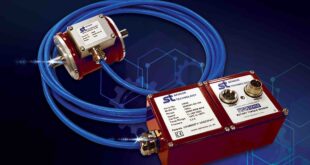Steve Hughes explores the importance of uninterruptible power supply systems in the medical sector
It’s not an exaggeration to suggest an uninterruptible power supply (UPS) can sometimes be the difference between life and death.
Hospital operating theatres, A&E departments and emergency services all require clean and consistent power, which a UPS can help provide.
A reliable power source is critical in the medical sector, whether that is in A&E or in ambulances. An uninterruptable power supply (UPS) is key to making reliable power a reality.
Simply put, the UPS provides a short-term supply of power to connected systems in the event of a power fault or failure.
The UPS is connected to a power network and, when the incoming voltage falls below a set level, networked equipment is swapped to the UPSs output to receive power from the UPS battery.
The major benefits to a UPS are that, depending on load condition and battery size, they can be used to supply energy to the load for several minutes or even hours.
In a medical setting, this stored energy time could be vital in the case of a power outage during surgeries or other critical activities.
As great as this technology is, it is important to monitor the inputs and outputs of UPSs to make sure they are functioning effectively and efficiently, as with any control loop system. This is particularly important as one of the main factors leading to a power fault, which would necessitate the use of a UPS in the first place, is poor power quality.
It stands to reason that you wouldn’t want an inefficient UPS contributing to further power quality problems in the future.
However, a UPS is trickier than some other control loops because it can use various waveforms.
The input will be an AC waveform, but this is rectified to DC for the battery before being inverted back to AC for mains usage. This makes it more complicated, as waveforms could be AC, DC or a complex combination of both, with frequencies of 300 KHz and beyond.
This complexity means a simple current transformer, which would typically be used to measure AC waveforms, won’t be up to the task alone. It’s for this reason that REO developed its W2C device. This contains a sophisticated measurement sensor that has the measurement characteristics required to accurately read complex waveforms, high frequencies and even overloaded circuits. This makes for a clean and consistent power source.
While there are usually diesel-powered generators on hand to support outages and power blackouts, they do not necessarily provide the instantaneous power needed in medical settings.
UPSs act like a buffer in this scenario, maintaining an uninterruptable power supply throughout the chaotic – and otherwise catastrophic – times.
Patient safety is paramount in the medical industry and effective, efficient UPSs are the key to ensuring no one and nothing is caught short.
Steve Hughes is managing director of power quality specialist REO UK.
 Engineer News Network The ultimate online news and information resource for today’s engineer
Engineer News Network The ultimate online news and information resource for today’s engineer





